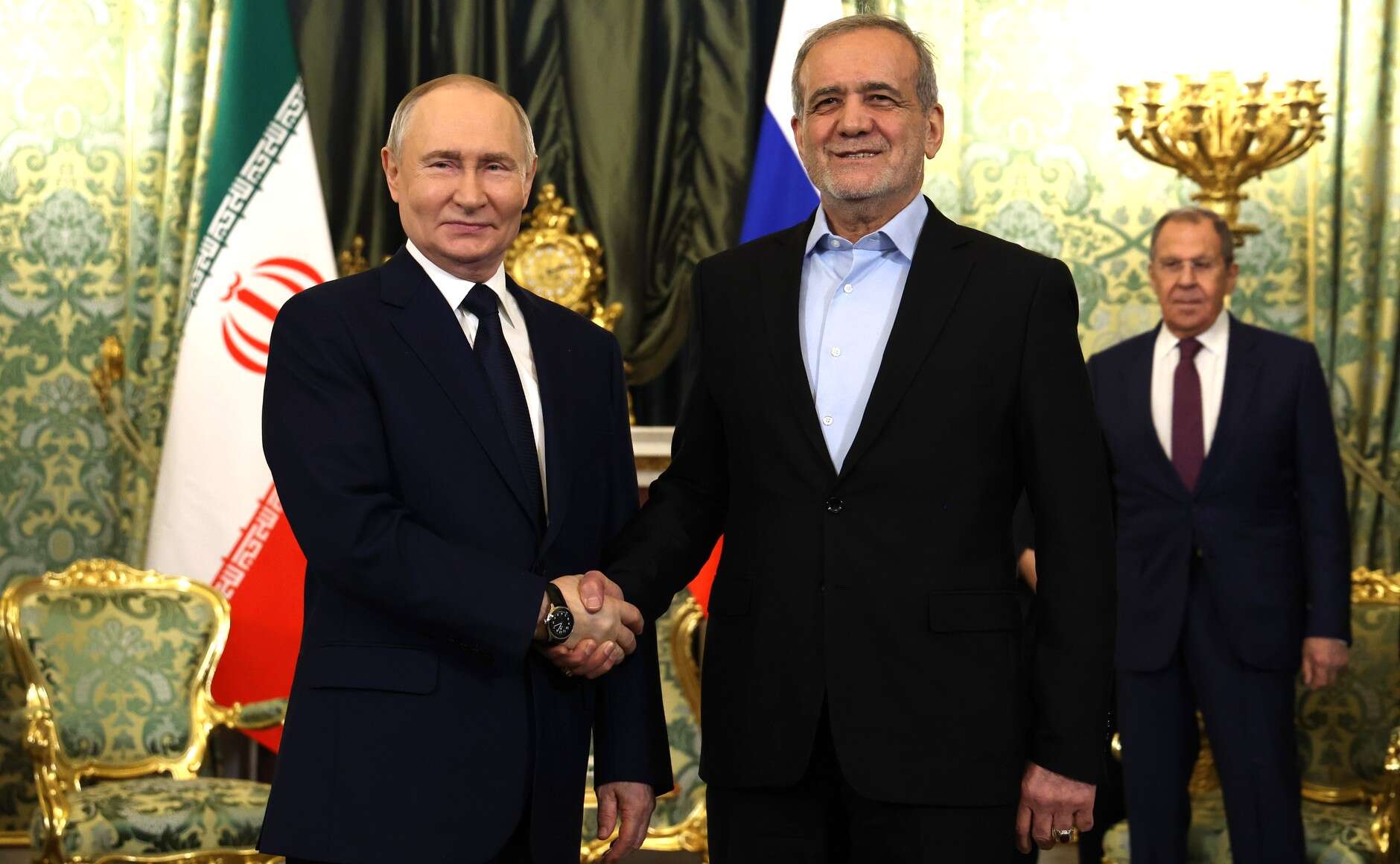

Russian President Vladimir Putin and Iranian President Masoud Pezeshkian on Friday (Jan. 17, 2025) signed a 20-year cooperation treaty aimed at strengthening their partnership. The Russia and Iran partnership, described as “comprehensive,” includes trade, military, scientific, educational, and cultural collaboration, reflecting closer ties between the two nations as they face mounting Western sanctions.
Putin praised the treaty as a significant step toward fostering stability and development in Russia, Iran, and the surrounding regions. He acknowledged trade between the two countries remains below expectations but expressed hope the pact would eliminate bureaucratic hurdles and expand economic ties.
Plans include sending Russian natural gas to Iran via Azerbaijan and improving transport routes to Iranian ports on the Gulf.
Russia’s relationship with Iran has grown closer since Moscow launched its military campaign in Ukraine in 2022. Both countries have faced international criticism, with Ukraine and Western nations accusing Iran of supplying drones to Russia for use in the conflict – allegations Tehran denies.
Pezeshkian, during his third meeting with Putin since taking office in July 2024, said the treaty marks the start of a “new chapter” in bilateral relations.
He highlighted plans to enhance trade and security cooperation, adding that regional problems should be solved without external interference. In an indirect reference to the United States, he criticized foreign involvement, saying it only fuels instability.
Facing economic difficulties and regional setbacks, Iran has increasingly sought Moscow’s support. Tehran is particularly interested in acquiring advanced Russian military technology, including air defense systems and fighter jets, to counter potential threats from Israel.
The Russia-Iran treaty outlines coordinated responses to Western sanctions and includes plans to simplify trade using national currencies. Both nations have agreed not to aid any aggressor targeting the other, although the agreement stops short of mutual defense commitments.
Russia and Iran, once adversaries, have built closer ties since the Soviet Union’s collapse in 1991. Moscow has become a vital trade partner and supplier of weapons and technology to Iran, helping the country navigate international sanctions.
Russia also played a key role in constructing Iran’s first nuclear power plant, which began operations in 2013, and is building two additional reactors.
The two countries have previously worked together to support Syrian President Bashar Assad’s regime during the civil war. However, Assad’s recent ouster dealt a blow to their shared efforts in the region. Iran’s “Axis of Resistance,” which includes militant groups Hamas and Hezbollah, has also faced setbacks from Israeli military actions.
Pezeshkian’s visit came just days before U.S. President-elect Donald Trump’s inauguration. Trump has vowed to revive his “maximum pressure” policy on Iran and pursue peace in Ukraine. Iran’s inclusion in the BRICS group of developing economies last year, alongside its growing alignment with Russia, signals a shift in global alliances amid these pressures.
Despite challenges, both leaders expressed confidence in the Russia Iran partnership to deepen cooperation and counter external threats.
